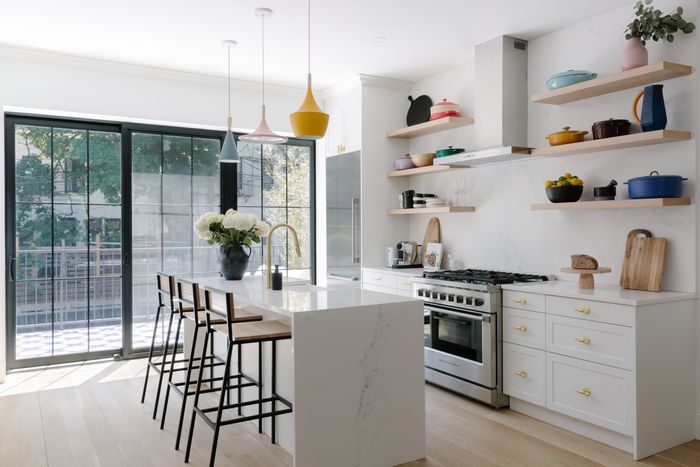Photo-Illustration: Curbed; Photo: Richard Powers
Like many big things, the Big Window is instantly recognizable. If you’re doing some fantasy browsing of Brooklyn brownstones during the workday, you’ve surely clicked through a slideshow of tastefully staged rooms and come across a giant glass window overlooking a backyard — like this enormous two-story glass wall opening into the garden of an $8.4 million Carroll Gardens townhouse or the wall-to-wall sliding glass doors on this $13 million brownstone in Cobble Hill. It can be jarring to see what looks like a slab of Chelsea warehouse transferred to the back of an otherwise staid rowhouse, but Big Window is a point of pride and sometimes even the hero image of the listing. What if you could be the owner of a Big Window too?
Of course, the Big Window is not new per se — creative homeowners have been putting glass walls in the back of their townhouses for decades. But now it seems almost standard for a townhouse renovation. Brick Underground even published a “how to” guide for homeowners. “The idea is to have a historical brownstone in front and a modern building in the back, so it’s a trend that allows people to get both the things they want,” said Alex Maroni, the Douglas Elliman broker representing the Carroll Gardens listing. Converting the back brick wall into a glass one is, in fact, often the first thing architects recommend during a townhouse renovation. “I’m trying to think of a project that we’re not doing it on,” said Brendan Coburn, principal at Brooklyn Studio, an architecture and interior-design firm that specializes in historic rowhouses. After a pause: “I can’t think of one.” How did we get here?
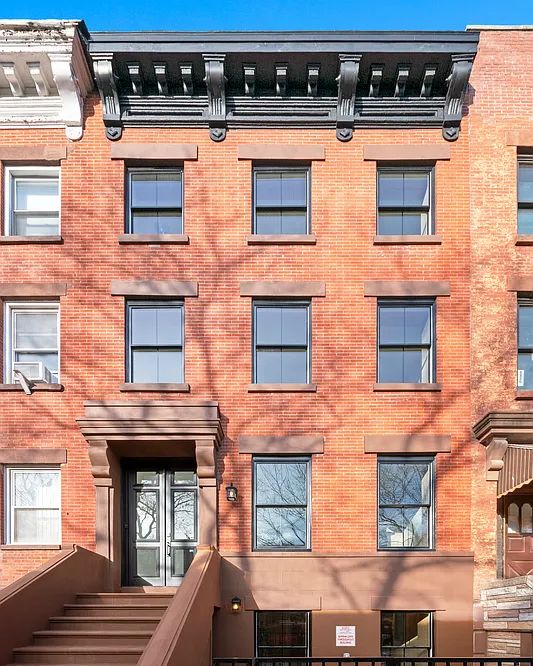
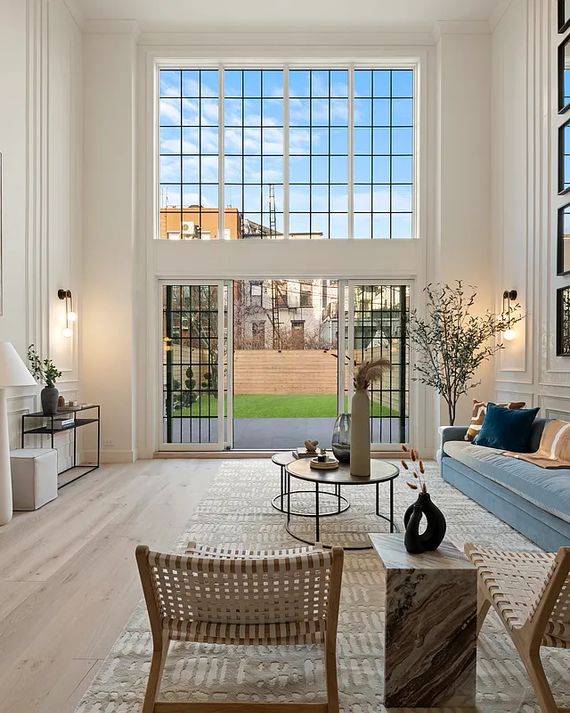
The front and back of this $8.5 million Carroll Gardens townhouse with a Big Window as its hero image in the listing. Douglas Elliman.
The front and back of this $8.5 million Carroll Gardens townhouse with a Big Window as its hero image in the listing. Douglas Elliman.
Some of this trend is undeniably due to the influence of architect Elizabeth Roberts, who developed a cult following for this signature move. “You can’t Google or Pinterest ‘Brooklyn townhouse’ without an image of an Elizabeth Roberts project coming up,” a colleague told the New York Times in 2019. There were also a few converging factors that set the stage for Big Window to go into overdrive: When brownstones were built in the 1800s, the garden floor was historically used as servants’ quarters and the garden itself for utilitarian tasks like drying the laundry; in more recent decades, as brownstones became more valuable and stuffing live-in servants into your basement more gauche, they turned into rich people’s single-family homes, and the garden and garden-level interiors became parts of the main unit. Unifying all these spaces both visually and literally with big glass openings just makes sense in this new reality. “Before, the backyard and that ground floor were really just in service of the house, not a part of the house,” Coburn said. “The trend comes as an extension of gentrification turning these houses into whole family houses.”
The Big Window in the back of a Bushwick townhouse renovated in partnership with the Brownstone Boys.
Photo: Nick Glimenakis
Plus, a common issue rowhouses have is a lack of light, which a huge window helps fix. “Nine out of ten clients we work with have a photo of a large glass opening in their Pinterest board, a lot of which is shot outside New York,” said Jordan Slocum, an interior designer who makes up one half of the Brownstone Boys. Buyers pine over the Roberts-esque big windows in Brooklyn townhouses but also the ones they see in modern houses upstate. And while there are stringent limits to what someone can do to the front of a landmarked townhouse, the back usually has much more flexibility, especially if it’s hidden from the street. Modifications still have to go through the Landmarks Preservation Commission, which Coburn says is typically interested in preserving a certain proportion of masonry to glass and prefers that owners install glass openings on the garden and parlor floors while keeping the top two floors intact. (Even the commission’s guidebook showcases a Big Window in its mock drawing of a rear addition.)
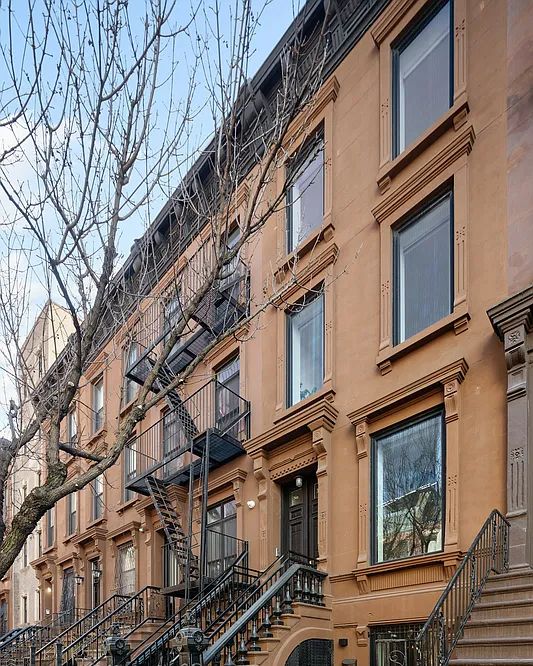
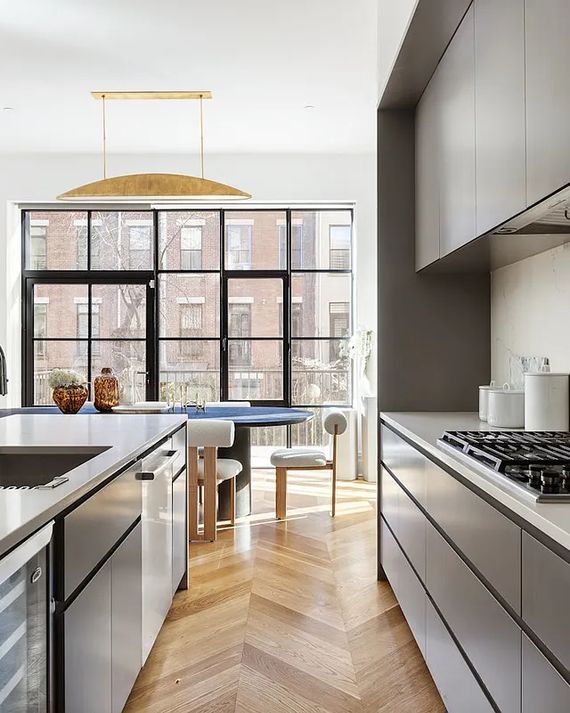
And then there are the finances of doing it. As the value of brownstones went up and buyers became wealthier, the buildings themselves were getting older. Coburn estimates that around the 1990s, these factors converged so that the brownstones were more likely to need gut renovation and the people who bought them were more likely able to afford them. Townhouses that had south- or west-facing back walls were especially degraded since roofs usually drain to the back of the house and the water would soak the brick and loosen the mortar as it expanded and contracted with the sun and the freezing temperatures. If you’ll already have to replace the wall, why not put in a gigantic window while you’re at it? It can cost anywhere from $100,000 to $150,000 to demolish and renovate a back wall, plus $50,000 to $200,000 more to put in the glass wall, depending on what kind of system you’re looking for.
The Big Window does have some drawbacks, however. Barry Bordelon, a Compass agent and the other half of the Brownstone Boys, points out that if you’re trying to maintain the historic integrity of the house, you won’t want to convert the back into glass. And New York City backyards are infamously full of mosquitoes. “The weather is rarely good enough that you really want to open an entire wall of your house to the outside,” Bordelon said. “It’s usually too cold or too hot, and the bugs are a real problem.” Aside from the extra installation costs, there are also the increased heating and cooling expenses from having a less insulated back wall. For clients for whom a Big Window is not exactly right, they have another suggestion: What about a Big Door instead?


